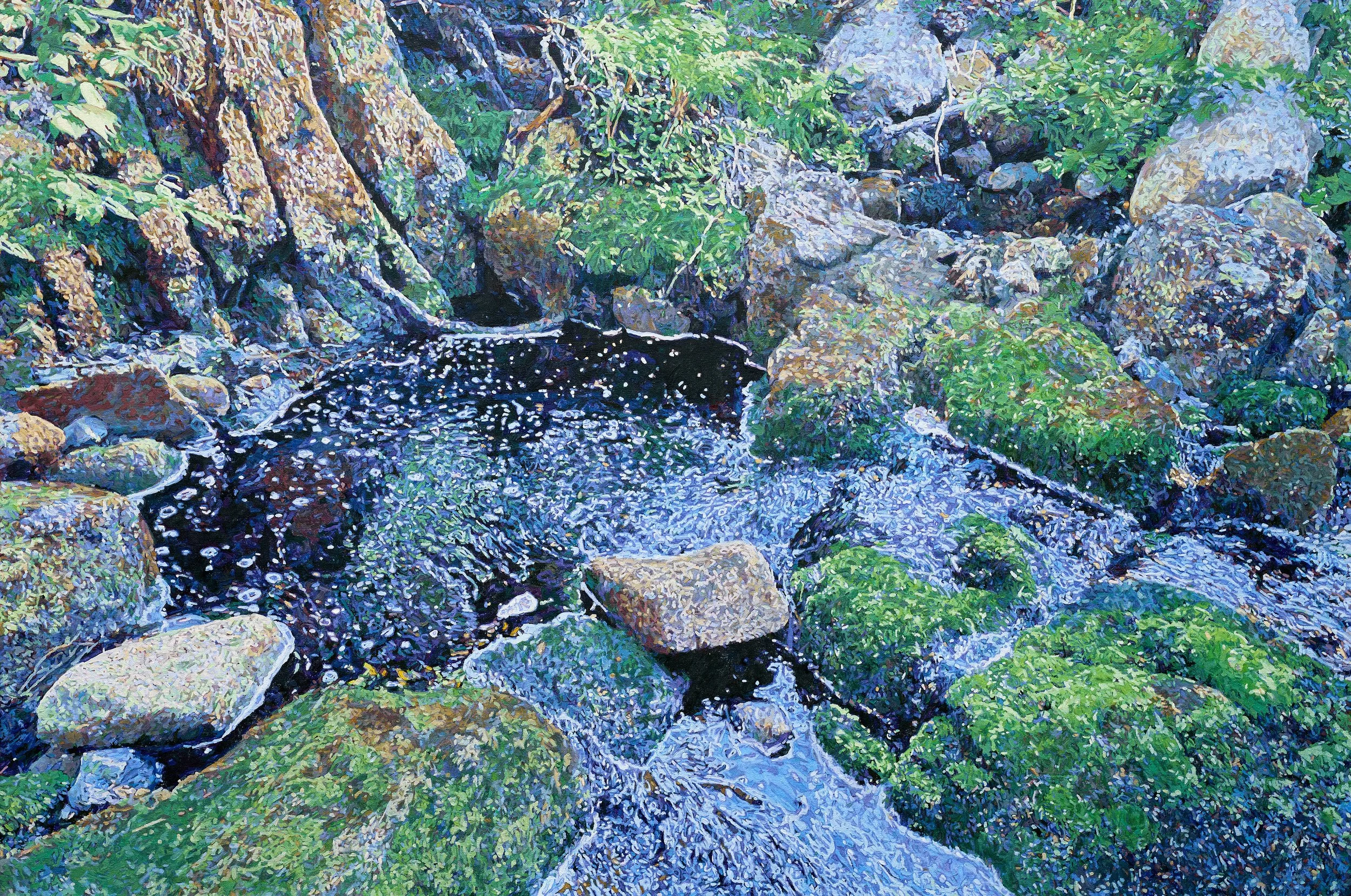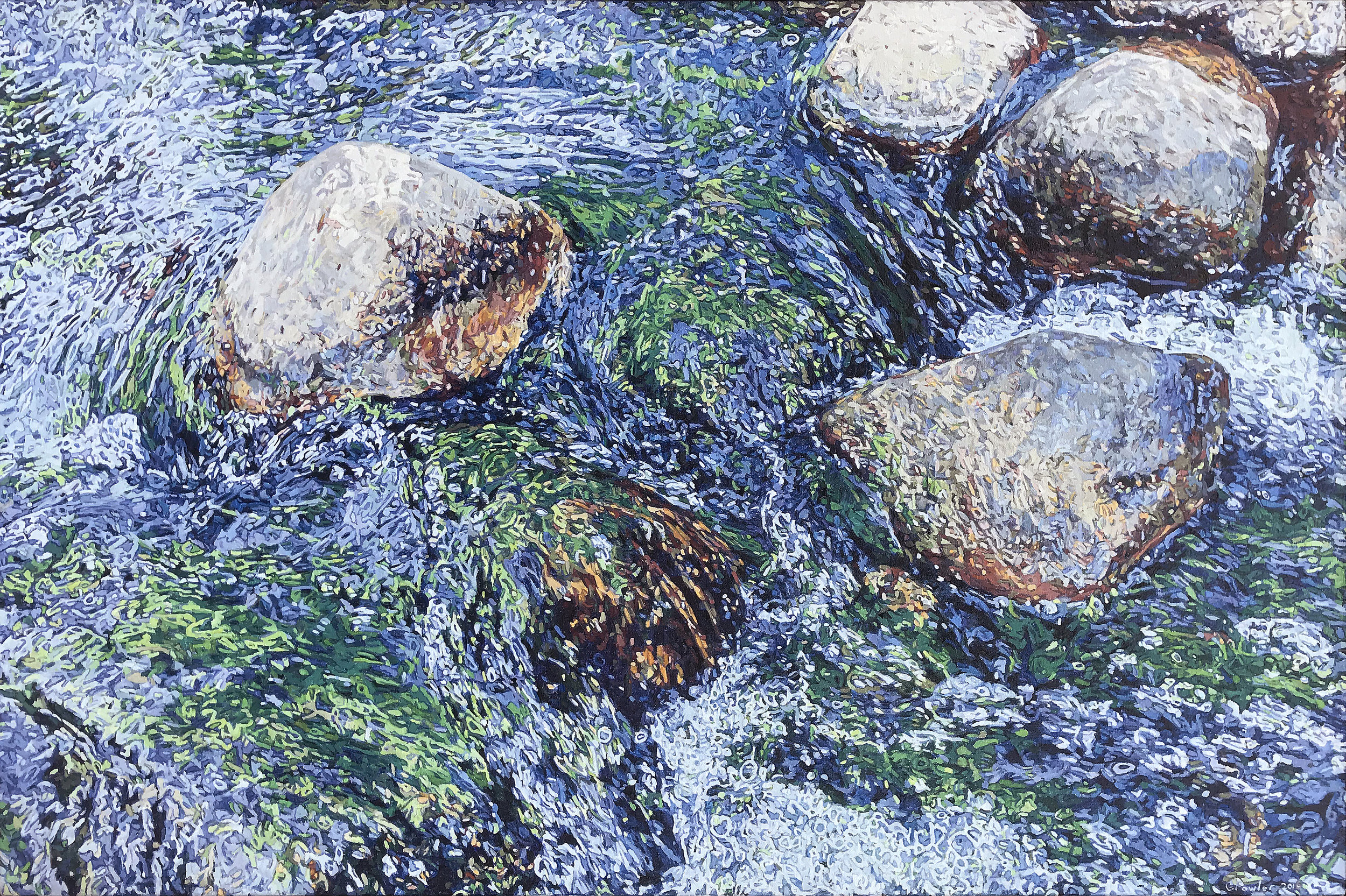Graham Fowler
My paintings are derived from photographs of landscape sites to which I have a strong aesthetic response and depict landscape in both an untouched, natural state as well as constructed park sites. Using detailed geological maps, I go to great lengths to obtain my subject matter, hiking deep into the wilderness following rivers and streams. I am largely interested in landscape as a potentially non-narrative motif. My focus is on painting representations of the fragmented, almost pixelated surface of water for its formal and aesthetic qualities. I am particularly interested in the play of light and colour, the tension created by the compression of near and far space, and the use of an overall picture plane wher no one area is pictorially more important than another. In these paintings I am finding ways of linking representational landscape paintings to formal aesthetic strategies, in particular non-hierarchal conceptions of overall space that are present in non-objective painters such as Mark Toby.
Initially, I saw landscape as a subject matter that could, for its formal qualities and less obvious, storytelling character, rest outside the narrative traditions of figurative painting. However, it became apparent that how we perceive landscape, both natural and constructed, is shaped by culture, conditioned by history, and entangled with the times in which we live. I have, over time, chosen to look at how landscape paintings are not autonomous but represent something outside themselves, something in the world tied to both culture and subjective experience. It is this conception of form and site, in combination with the ambiguous content of landscape that has shaped the thematic exploration of my work. Landscape in its pure untouched form is not man made but is interpreted and understood through the culture of its time. It has, for much of its history, been seen as the background for the subject matter of a painting and not the subject itself. It lacks the narrative interpretive possibilities of the figurative tradition that informs much of Western painting, and therefore its subject is more difficult and elusive to identify. While many painters have incorporated landscape as an important element in their art, it has often remained a vehicle to create mood and inform the symbolic narrative of figurative drama. It was only in the early nineteenth-century, with painters such as Constable and Turner, that landscape became the subject and not the backdrop in the popular imagination. Landscape as subject matter with all its complexities is the subject matter of my painting.My artwork addresses three fundamental but diverse, overlapping themes: the sensation of nature as subject matter in its own right, the social construction of nature, and the aquatic world. In each series of my paintings I encounter new aesthetic challenges and issues of thematic content that carry me into my next investigations.
Virtual Interview with Graham Fowler
Virtual interview with Graham Fowler and Kenza Gray of Han Art Gallery, conducted for the Art Toronto 2020 Hybrid event,










